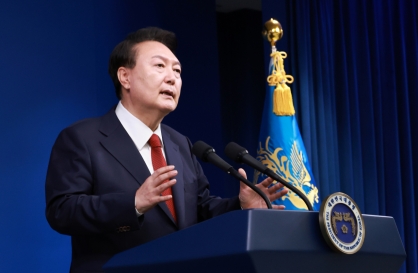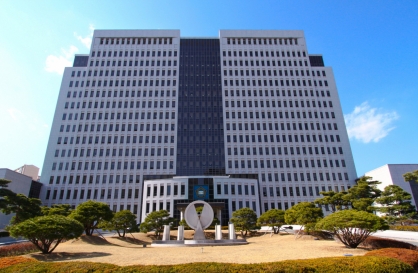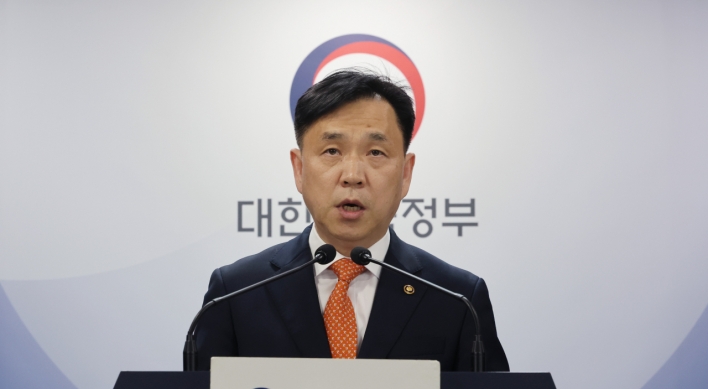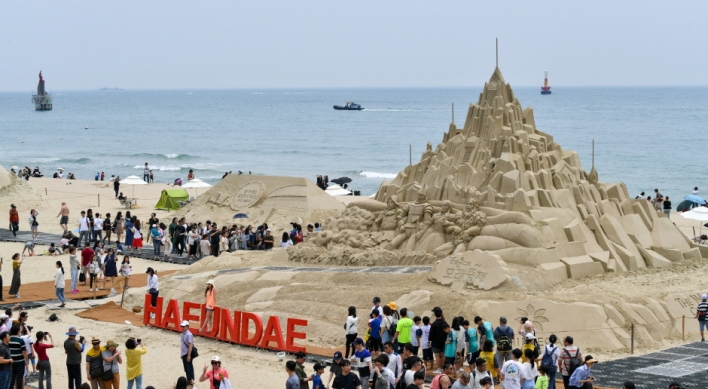Danish Ambassador highlights green growth alliance with Korea
By Korea HeraldPublished : July 19, 2015 - 18:35
In Denmark, renewable energy creates half of the country’s electricity. People drink water from the tap, swim in city harbors and ride bicycles everywhere.
The world’s happiest nation is also one of the greenest, not accidentally, and aims to create a “fully green economy” by 2050.
In a lecture on July 11, Danish Ambassador Thomas Lehmann said Denmark and Korea should invigorate their partnership for a shared sustainable future by turning the threat of climate change into resourceful opportunities.
“Our experience shows that through persistent and active policies prioritizing renewable energy, it is possible to sustain high economic growth,” Lehmann told students of the Hugh O’Brian Youth Leadership Foundation Korea at Kyung Hee University.
“It is critical for the young generation to lead the future of green growth by setting the direction of development.”
The world’s happiest nation is also one of the greenest, not accidentally, and aims to create a “fully green economy” by 2050.
In a lecture on July 11, Danish Ambassador Thomas Lehmann said Denmark and Korea should invigorate their partnership for a shared sustainable future by turning the threat of climate change into resourceful opportunities.
“Our experience shows that through persistent and active policies prioritizing renewable energy, it is possible to sustain high economic growth,” Lehmann told students of the Hugh O’Brian Youth Leadership Foundation Korea at Kyung Hee University.
“It is critical for the young generation to lead the future of green growth by setting the direction of development.”

Green growth does not have to come at a cost to business, asserted Lehmann, adding that jobs could be created by promoting green technologies and protecting the environment.
Since signing the “Energy 2020” agreement in 2012, which aims for a 100 percent green economy, 4,700 jobs were created in Denmark by the end of 2013. By 2020, the archipelago nation would produce half its electricity from renewable sources through additional 6,000 to 8,000 “green jobs.”
“The transition required a broad consensus and political will,” the ambassador stressed. “Public opinion has been very important, with our nongovernmental organizations engaging in debates, setting agendas and shaping policies.”
The role of cities has been equally essential. As more than 70 percent of the world’s carbon dioxide emissions come from cities, Copenhagen has committed to be the world’s first CO2-neutral capital by 2025.
The Kingdom of Denmark -- which consists of Denmark, The Faroe Islands and Greenland -- has a long tradition of investing in and developing resource-efficient solutions for energy, environment and climate.
As a market leader in green technologies, Danish companies have exported their innovations worldwide, spearheading the global sustainable effort. Denmark aims for over $15 billion in exports of green technologies by 2020.
The country’s transformation followed the 1973 global oil crisis, which doubled the price of oil and raised alarm bells about national energy security.
The first national energy plan was formulated in 1976 with a focus on reducing energy consumption and oil dependence, and after the second oil crisis in 1979, an energy ministry was inaugurated.
Denmark set a plan to “decouple” energy consumption and economic growth in 1981. Since then, the country’s economy has grown by 80 percent, while energy consumption has remained the same and carbon dioxide emissions have decreased.
The Nordic nation now has one of the lowest levels of per capita energy consumption in the developed world, with the highest efficiency. Wind power produces 20 percent of total energy, and is expected to generate half of its electricity by 2020.
“Where Denmark has been a ‘first mover’ in the green transition, Korea has proven to be a ‘fast mover,’” Lehmann noted, referring to the Korean-Danish Green Growth Alliance established in 2011 for increased cooperation in government, research and trade. “Our alliance shows that we can share our experiences and draw upon each other’s strengths.”
On the “green transition index,” Denmark outperforms Korea in energy, environment, diplomacy, commercialization, investment, innovation, agriculture, tourism, biodiversity and climate adaptation; and Korea tops Denmark in fisheries, forestry, transport and construction.
The fifth meeting of the KDGGA will be held this fall in Denmark, and the Global Green Growth Forum will host a summit in Copenhagen next year.
Denmark has taken a nonnuclear path since the 1980s following a parliamentary decision. Sweden’s nuclear plant across the sea from Copenhagen triggered public debates about the safety and security of nuclear power.
“Looking directly at a nuclear plant across the sea raised doubts about having the technology at home,” the ambassador explained, adding that civilian resistance had been forceful.
“Nuclear energy will always pose challenges in safety and cost, as its wastes must be contained for over 100,000 years.”
Lehmann claimed that the nuclear debate was related to the price of electricity, which he argued was a “political matter” as much as an “economic matter.”
“The price of electricity was determined socially and politically in Denmark,” he emphasized. “This is where public debate can happen. Despite opposition, we set in motion priorities and incentives for change.”
Raising the price of electricity would incentivize companies and people to save energy, the ambassador argued, while pointing out that electricity in Korea was cheaper than in many other countries.
“The question is how cheap should it be? This is a political question for Korea,” he said. “In Denmark, there was much skepticism in the beginning, but people stuck to their visions and policies, because they believed it was the right thing to do.”
The Scandinavian country is currently a global leader in the “circular economy,” which runs on recycled biological nutrients. The Kalundborg Symbiosis in Denmark trades residual industrial products -- steam, dust, gas, heat and slurry -- through public-private partnerships.
Danish company Grundfos is a world-leading pump manufacturer in heating, air-conditioning and sewage. It provides circulator pumps to 90 percent of Korea’s skyscrapers.
Wind power generator Vesta supplies over 48,000 turbines in more than 70 countries, covering 70 percent of plants in Korea.
In the ocean industry, the Maersk Group, the world’s largest containership and supply vessel operator, has strong cooperation with Korean companies. Daewoo Shipbuilding & Marine Engineering ordered 20 Maersk Triple-E Vessels in 2011, which emit half the carbon dioxide of competitors.
By Joel Lee (joel@heraldcorp.com)
-
Articles by Korea Herald




![[K-pop’s dilemma] Can K-pop break free from ‘fandom’ model?](http://res.heraldm.com/phpwas/restmb_idxmake.php?idx=644&simg=/content/image/2024/05/09/20240509050541_0.jpg&u=20240509173751)




![[News Analysis] Yoon's first 2 years marked by intense confrontations, lack of leadership](http://res.heraldm.com/phpwas/restmb_idxmake.php?idx=644&simg=/content/image/2024/05/09/20240509050612_0.jpg&u=20240509233252)

![[Graphic News] Beer the most favored alcoholic drink by Koreans](http://res.heraldm.com/phpwas/restmb_idxmake.php?idx=644&simg=/content/image/2024/05/09/20240509050765_0.gif&u=)







![[Today’s K-pop] NCT’s Mark to drop 1st solo album in February 2025](http://res.heraldm.com/phpwas/restmb_idxmake.php?idx=642&simg=/content/image/2024/05/10/20240510050597_0.jpg&u=)